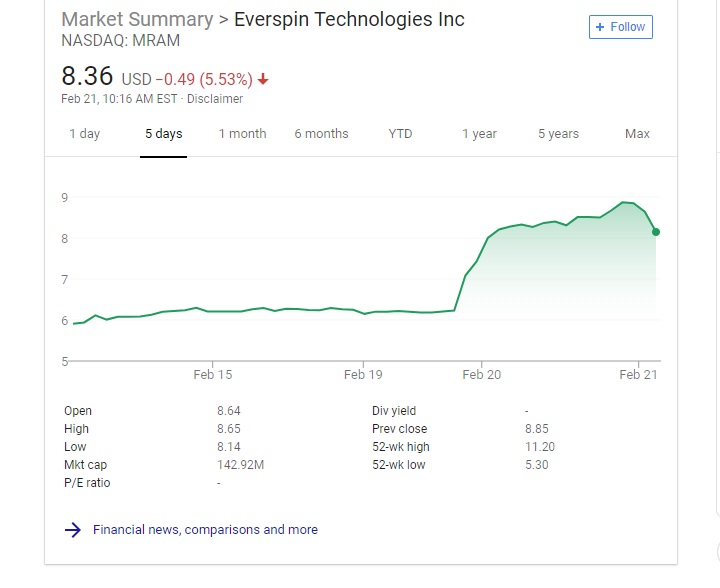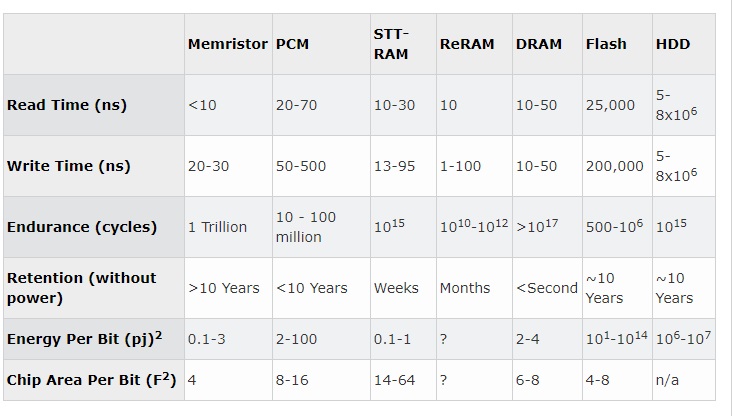Intel STT-MRAM Technology Is Ready for Mass Production
At the International Solid-State Circuits Conference Tuesday, Intel revealed that spin-transferable torque magnetoresistive RAM (STT-MRAM) technology is ready for mass production. The company is expected to use its old but reliable 22FFL FinFET process to manufacture the memory chips, as reported today by EE Times.
Intel’s STT-MRAM Technology
Due to its high endurance and strong retention, STT-MRAM can be a future alternative to embedded SRAM and NAND flash technologies. EE Times' report cites Ligiong Wei, an Intel engineer who presented the technology, saying the 22nm embedded MRAM technology has a high yield rate of over 99.9 percent. This high yield rate is likely enabled by the MRAM’s simple design, which leaves little room for error and defects.
The technology also promises write endurance of more than 1E06 (1 million) cycles and read disturb error rate of more than 1E12 (a trillion) cycles, according to Wei.
However, for now it looks like Intel is preparing to manufacture STT-MRAM chips that have a capacity of only 7Mb, so it could be a while before we see it used in storage products.
The Promise of MRAM
MRAM is not a new technology, but as process nodes have shrunk, it’s starting to become more practical because now manufacturers can make some usable high-density memory chips that are relatively competitive with other existing memory technologies.
MRAM and its various implementations offer higher write and read speeds than RAM, virtually limitless endurance, as well as the capability to store data for years at high-temperatures. MRAM and similar 'hybrid' technologies that can act as both computer memory and storage have been considered a holy grail in the industry.
The technology, once mainstream, offers to revolutionize how computers work. It could be especially useful for machine learning as the neural network nodes/artificial neurons could just compute data, plus have 'memories' about what they did with that data.
Get Tom's Hardware's best news and in-depth reviews, straight to your inbox.
Competing Non-Volatile RAM Technologies
Global Foundries has been offering its similar ST-MRAM technology on its 22FDX process since 2016, but it’s unclear whether or not any of its customers are using it in real world products.
Global Foundries licensed the technology from Everspin, a public semiconductor company from Arizona rumored to have given the technology to Intel recently. Everspin’s stock recently skyrocketed, and rumors say that the reason for the stock price surge is due to the company’s collaboration with Intel.
One technology that competes with MRAM is phase-change memory (PCM), on which multiple companies have been working, including Micron, Samsung, IBM and even Intel. Some believe that Intel and Micron’s 3D Xpoint technology was PCM all along, but Intel has denied it.
Another one is represented by memristors, non-volatile components which HP has researched for many years. However, after five years HP seems to have considered it too impractical to continue researching.
At the conference on Tuesday, Intel also announced that’s going to manufacture resistive (ReRAM) chips as a low-cost option for embedded non-volatile memory for SoCs used in IoT and automotive, EE Times noted. Intel claimed that its ReRAM chips will have the highest density in the industry due to the company’s use of the 22nm FinFET process.
Perhaps the most promising of them all is Nantero’s carbon nanotubes-based NRAM technology, which Fujitsu licensed in 2016 and promised to mass-produce in 2019. NRAM is expected to improve performance metrics over most other non-volatile memory technologies at a lower cost. It could also store data for 1,000 years at 85 degrees Celsius (185 degrees Fahrenheit).
In 2016, Fujitsu said it is working on bringing to market a 256Mb NRAM chip that would cost half the price of equivalent RAM. The capacity is far from impressive, but it also seems significantly higher than Intel’s 7Mb STT-MRAM technology.
Lucian Armasu is a Contributing Writer for Tom's Hardware US. He covers software news and the issues surrounding privacy and security.


